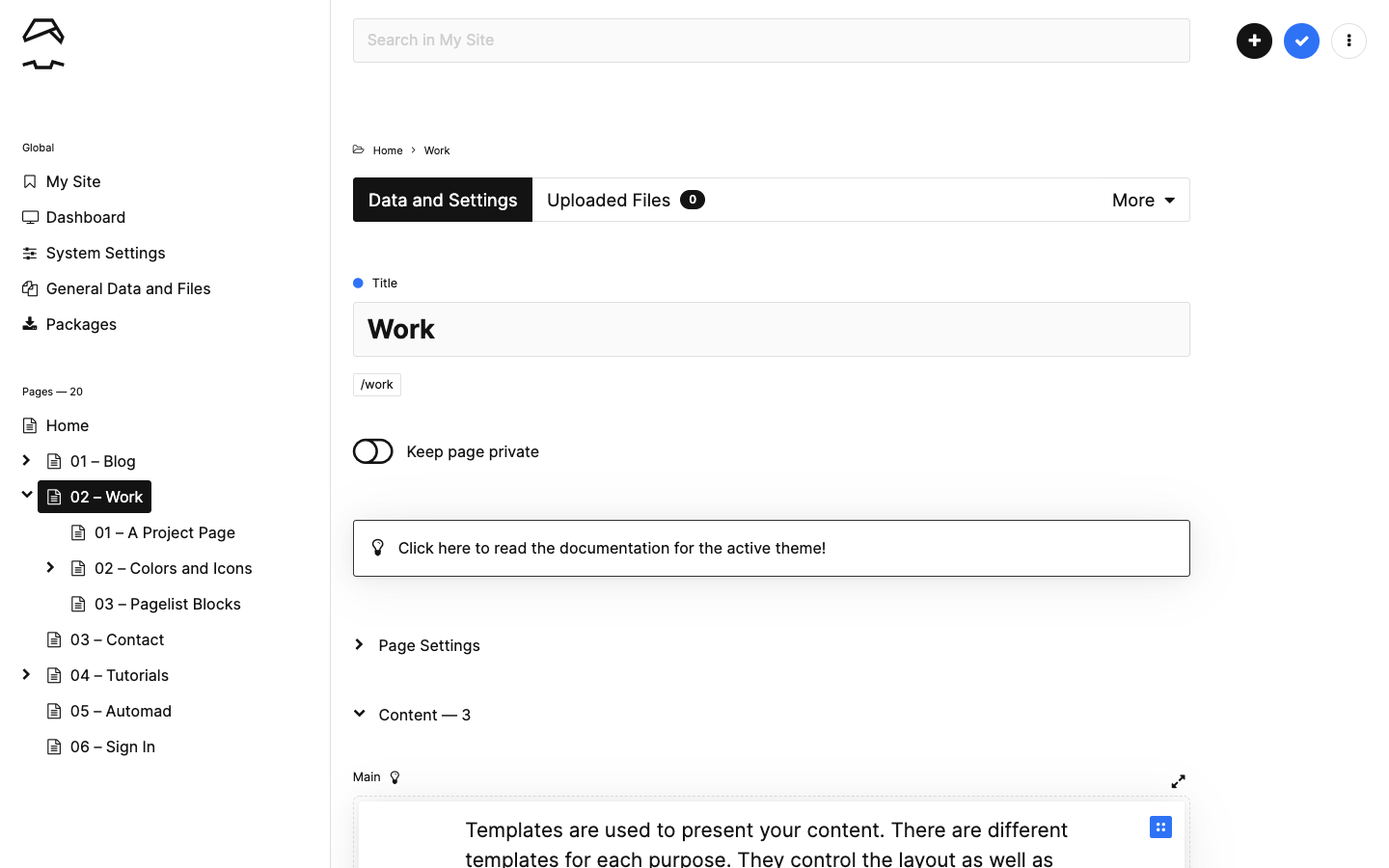Creating Pages
Managing pages using the dashboard is quite self-explanatory. Pages can be added by hitting the button on the right side of the navigation bar on top. To navigate to an existing page, you can browse the site tree on the left sidebar or start typing some letters of the page title into the search bar on top. There you can upload files, change the page settings and edit the page content. Note that you can also edit your text content directly while browsing your site. The In-Page edit mode is available as soon as you get logged in.

Dashboard
The Data & Settings tab contains all text content and settings of a page. At the top you can change the page title and define whether your page should be private or public. All other settings and page content is subdivided into five sections — Page Settings, Content, Colors, Template Settings and Unused Variables.
Page Settings
Here you can define the basic properties of the page:
- Choose a template for the page
- Hide the page form navigations and menus by activating the
hiddentoggle - Define the order of the page in pagelists and navigations by adding a prefix — note that prefixes are invisible to visitors and will be stripped from URLs
- Define a custom name for the page directory that will be used as URL slug
- Redirect the page to another URL
- Set a date for your post
- Tag the page with some labels or categories
Content
The content section contains all text and block vaiables in the currently selected template. Click the little light bulp icon next to the variable label to get tooltips and descriptions for a variable. Text and block variables can be opened in a fullscreen editor for a more distraction free user experience. Just click the little expand icon on on the top right of the input to change to the fullscreen mode.
Colors and Settings
In case a theme provides a customizable color scheme, all available color options are listed here in the Colors section. All other settings that are in a way specific to the template in use and control the behavior of a page can be found in the Template Settings section. This section also contains settings such as pagelist configurations, menu options and teaser images.
Unused Variables
All variables which do not occur in the currently applied template can be found here.
Private Pages
You can use the privacy switch below the page title to make a page private. Private pages can only be viewed by people that are logged in. As long as a page is private, the page itself as well as all its children are not publicly visible.
In-Page Edit Mode
When being logged in, you can change a text directly on the page without changing to the dahboard. Just click the blue editing button next to a text to open a text editor in a modal window.
